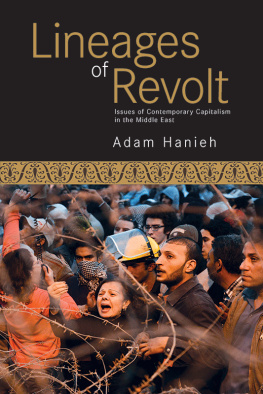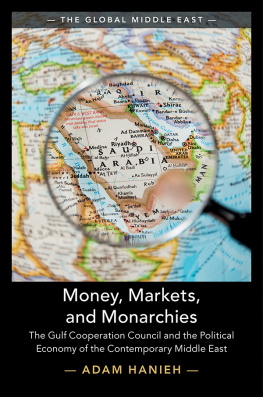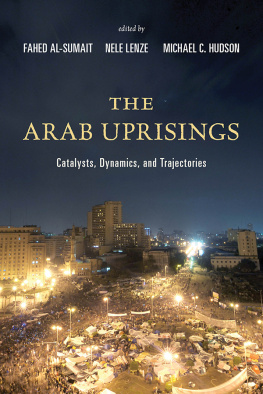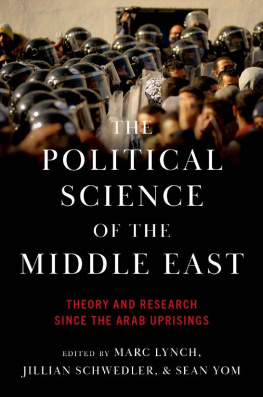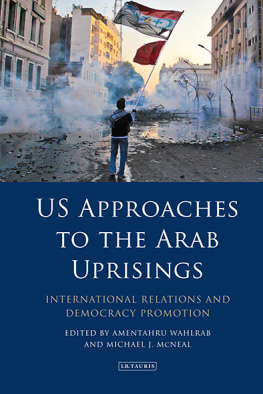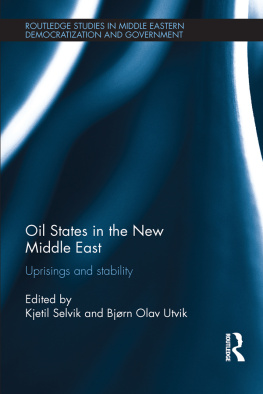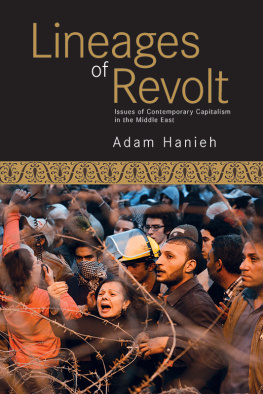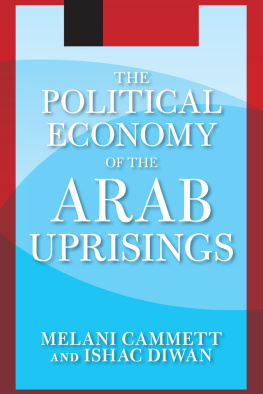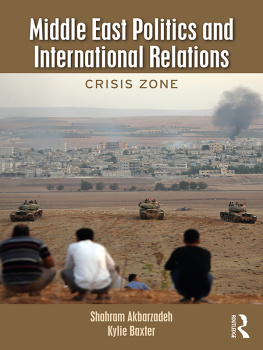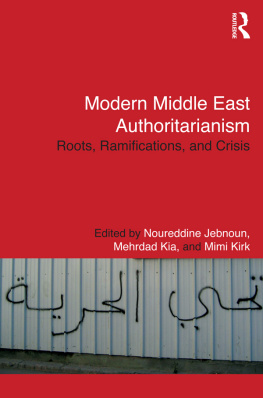Contents
Chapter 2
Framing the Region: Imperialism and the Middle East
The contemporary Middle East is shaped by two important and interlinked dynamics. First, since the mid-twentieth century, the region has represented a vital zone within the wider global economy. Its vast supplies of hydrocarbons, coupled with the prodigious financial surpluses that accompany them, mean that control of the Middle East is a source of enormous strategic power and thus a long-standing flashpoint of global conflict. Second, however, the dynamics of the Middle Easts own social formation, and the struggles that are inevitably bound up with them, form a crucial counterpoint to the rivalries and collusion of foreign powers. For this reason, the region is much more than simply an object of external dominationthe histories and struggles of the region are supremely relevant, existing alongside and within the story of foreign rule. The purpose of this chapter is to consider the interaction of these two dynamics and their implications for contemporary patterns of class and state formation. Subsequent chapters will discuss in detail the character of the regions social relations under the impact of neoliberalism. The aim here is to set the scene for that discussion by providing an overarching account of how the trajectory of imperial domination since World War II has shaped the specificities of the neoliberal era, the means through which this domination has been extended and enhanced, and the ways this has been articulated withand altered byparticular forms of resistance.
The chapter begins by tracing the extension of US power through the region in the postwar period and detailing its conflict with popular struggles seeking independence and greater sovereignty. US strategy initially relied upon the cultivation of various regional allies, settling in the late 1960s on a strategic partnership with Israel, Iran, and Saudi Arabia as a means to confront the growing strength of Arab nationalist movements. As military defeat pushed back struggles in Egypt and elsewhere, the United States also employed food aid and other forms of assistance to lock development patterns into a dependency on Western imports and financial inflows. In the specific conjuncture of global crisis that racked the world economy in the 1970s, this relationship paved the way for mounting fiscal problems that culminated in the debt crises of the 1970s and 1980s, finally opening the path to the neoliberal reforms that will be explored in later chapters.
This early history confirms that imperialism is not simply a question of military conquest; central to the heightened control of Western powers has been the regions unequal and uneven integration into global capitalism. The second part of the chapter explores this integration in greater detail, examining the trajectory of US and European relationships with the region through the 1990s and 2000s, as well as the rise of new actors such as China and Russia. The various bilateral trade and financial agreements promoted over these decades have profoundly reworked the nature of capitalism in the Middle East. By reconfiguring the patterns of production and consumption, they have acted to subordinate the region to the circuits of accumulation in the advanced capitalist countries. Understanding these varied paths of integration of the Middle East region into the world economy will be an essential element to discussions of the neoliberal era in later chapters.
The Transition to US Power
World War II signaled a major shift in both the nature of capitalist production and the structure of the world market. Most significantly, the end of the war witnessed a qualitative leap in the internationalization of capital. Capitalist firms, led by those headquartered in the United States, expanded overseas and oriented their production toward international exports. Between 1959 and 1964, US companies set up international subsidiaries at the rate of more than three hundred per year, more than ten times the prewar rate. Internationalization brought with it a fundamental reconfiguration of the transport sector. Central to this was, of course, mass automobile production, which expanded as factories were built throughout Europe under US-backed reconstruction plans. Large-scale commercial land and air transit also grew rapidly in the immediate postwar period as the first global markets began to take shape.
All these trends were underpinned by a growing demand for inputs of energy and raw materials. Internationalizationbecause it was premised upon globally oriented production circuitsdemanded large increases in energy use. And here, too, there was a shiftaway from the centuries-old use of coaltoward oil, and later natural gas, as the principal sources of energy. Oil had become, in the words of Simon Bromley, a strategic commodity. Not only did these hydrocarbons supply the necessary energy for industrial production and transportation, they also formed the basic feedstock for the vast array of products generated in the new petrochemical industries.
Through the first few decades of the twentieth century, the bulk of the worlds oil production had been located in Europe and the United States. But following a wave of discoveries during the 1920s and 1930s, it became clear that the Gulf region of the Middle EastSaudi Arabia, Kuwait, Iraq, Iran, and the smaller Gulf statesheld the worlds largest supplies of cheap and easily accessible hydrocarbons. This brought with it profound geopolitical consequences, conferring on the region a potentially decisive role in determining the fortunes of capitalism at the global scalea stupendous source of strategic power, as a US Department of State memo described Saudi Arabia in 1945.
But concurrent with this transformation in the nature of capitalist production were sweeping changes to the Middle East state system. The existing nation-state borders were largely a result of British and French machinations, which had divided the region into various colonies and assorted protectorates in the early twentieth century alongside the collapse of the Ottoman Empire. World War II, however, had significantly disrupted these old colonial structures. A deep-seated yearning for independence had been percolating for decades andwith the weakening of British and French hegemony during and after the wara resurgence of anticolonial struggles shook the established patterns of rule. Squeezed by mounting financial and political crises at home, the former colonial powers were faced with burgeoning movements demanding control over their natural resources and strategic transport routes, and the right to freely determine relations with other countries. The increasing intensity of these struggles raised the specter of popular sovereignty and national independence over what had arguably become the most important zone in the world market. These challenges to British and French rule took place in the context of the new global order that had consolidated in the ashes of war. The United States had emerged as the preeminent capitalist power, its military and economic leadership vastly superseding the older colonial rivals of Europe. At the same time, however, the Soviet Union had won great prestige through its resistance to Nazi Germany and was also seeking to extend its global reach. As a result, many of the Arab leftist and anticolonial movements that had emerged in the postwar period looked toward alliances with the Soviet government as a means to carve out space against their colonial masters.
It was in recognition of these dynamics that shortly after World War II, US president Harry Truman declared, in a famous speech to Congress, that the United States would actively intervene around the world in support of its interests and those of the free world. Although the Truman Doctrine, as it became known, was framed largely as a response to a growing Soviet influence in Turkey, Greece, and elsewhere, at the root of US foreign policy concerns were the various independence and left-wing movements that had emerged in the wake of Europes destruction. Trumans speech did not directly reference the Middle East, yet its supreme significance was undoubtedly foremost in the minds of the speechwritersan earlier draft confirmed the importance of the regions great natural resources.

